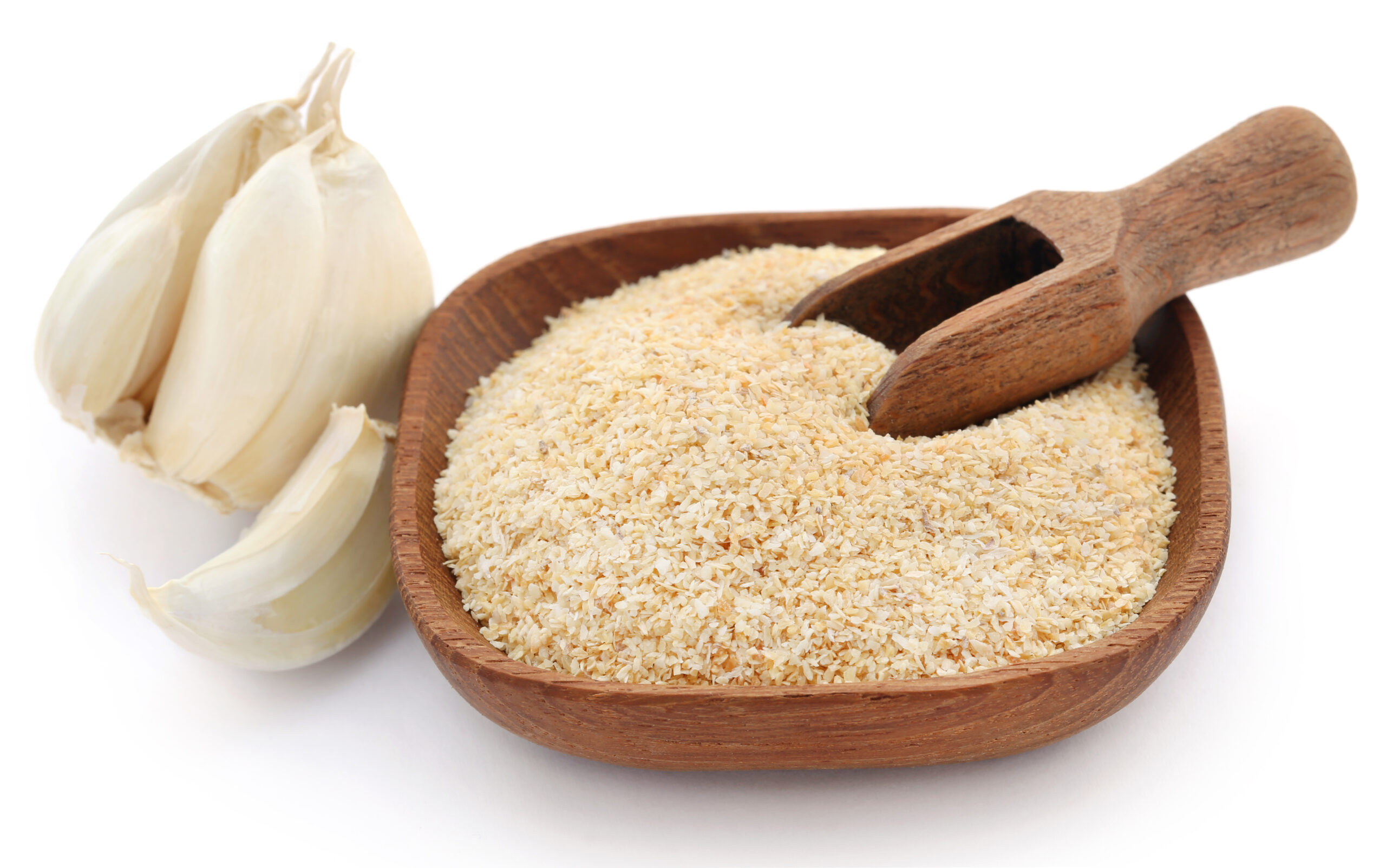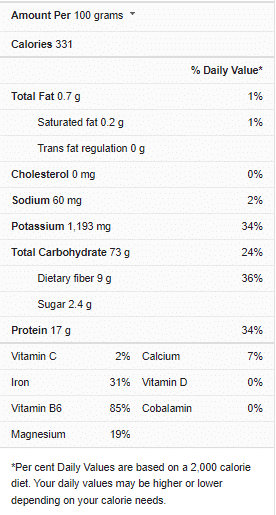Another popular aromatic herb that has been used for a long period in culinary is garlic; it is one of those small spices that carry a rich flavor that can transform a simple dish into a flavorful one. Like most spices, garlic is also available in fresh and dry forms, which can be used interchangeably with the right measurements.

Garlic powder nutrition facts

The fresh ones are commonly used because they carry a more intense flavor. Most persons may not see the need for a dry one, but what if you run out of fresh garlic last minute and the only available thing in your pantry is the dry one, but you’re concerned about the right measurements and if the dry garlic would do justice to your meal.
There’s no need to fret as I would be covering all you need to know about powder garlic when substituting it for a fresh one in your meal.
What is powder garlic?
Powdered garlic is a fine powder made from dry garlic cloves; it is made primarily for extended shelf life and is easier to enhance your food’s flavor without going through the stress of peeling and cutting the spicy garlic.
There are two types of garlic: the hard neck, which thrives in a colder climate, and the softneck, which thrives in warmer climates. The softness is commonly used as a garnish because it has a less complex flavor than the hard neck and longer shelf life. The soft neck garlic is also the most common garlic grounded to powder and used in cooking.
Garlic is believed to have originated in Central Asia, South Asia, or in Southwestern Siberia; garlic is a versatile herb/spice used in ancient times and has culinary, medicinal, and spiritual uses. It is highly nutritious, containing carbohydrates, proteins, minerals, vitamins, dietary fiber, etc.
Powder garlic uses in recipes
Fresh garlic is a culinary staple that adds pungent flavors that change to a nutty and caramelized flavor. Still, the powder form has a less intense flavor that is often used as a seasoning and is best paired in recipes that don’t require garlic as the star ingredient. Powder garlic adds a subtle but present flavor that wouldn’t be easily detected like the fresh ones but would still make the meal taste delicious. Some recipes it can be added in includes:
- Garlic Bread
- Crispy Parmesan Baked Potatoes
- Easy Parmesan-Garlic Chicken
- Easy Spinach Artichoke Dip with
- Creamy Tuna Noodle Casserole
- Buffalo Wild Wings Spicy Garlic Sauce
- Quick Chicken Teriyaki
- Aloha Pork Chop Skillet
- Polynesian Glazed Meatballs
- Buttery Parmesan Garlic Bread
- Honey & Spice Pork Tenderloin Rub
- Saucy Pork Chops
- Angel Hair with Garlic Powder and Parmesan Cheese
- Garlic Breadsticks
- Garlic Butter Spread
Garlic powder for fresh garlic substitution
Garlic powder is a simple and common alternative for garlic cloves in cooking, baking, or seasoning; it is commonly used in marinating meat or poultry and in cooking in soups, sauces, and casseroles. The garlic powder is ideal for baking garlic bread and other baked garlic recipes.
This powder version of garlic is also useful if you’re not a fan of eating or seeing the cloves in your meal, no matter how much you dice them. So if you run out of the fresh garlic and cannot get your hands on any, but you have the powder ones in your pantry, you could easily add some to your meal, and I would be showing you how.
In soups and sauces
These are the most common recipes that the garlic powder can seamlessly fit. The fresh garlic would add an intense and rich flavor to your soups and sauces, but the powder garlic would equally give the same result but in a subtle way while making the whole cooking process easy and faster.
You can add this grounded spice to your tomato sauces, cheese sauces, white sauces, and even in homemade pesto recipes. The best way to get the most out of your pasta sauces is to use the garlic powder in smaller portions before advancing if needed. This way, there is an even balance to all the flavors in the recipe. For example, when substituting the garlic powder for the fresh garlic, Use 1/8 teaspoon of garlic powder instead of one clove of garlic.
Litehouse freeze dried garlic
In baking
Garlic powder is often used in baked goods like garlic bread because it adds a subtle garlic signature taste without garlic particles in your bread.
To get the best results, mix the powder garlic with other dry ingredients and mix it with softened butter or olive oil before adding it to your bread.
For a basic mixture, use 1-2 teaspoons of garlic powder with one teaspoon of onion powder, 1/2 teaspoon of powder parsley, and paprika before adding it to a 1/2 cup of softened butter. Warp the buttered bread securely in an aluminum foil, then bake for 15-20 minutes until butter is melted evenly on the bread.
Frequently asked questions (FAQs)
How Long would powder garlic last?
Powder garlic has a long shelf life and would last for up to 3-4 years, but it is best to use it early as it might start losing its flavor if it stays longer on the shelf.
When is it best to use the garlic powder in a recipe?
Garlic powder is best added when you want the taste that garlic provides without the added texture of garlic.
When can you add garlic powder when cooking?
Garlic powder can be added when other dry spices are added to cook properly, but it shouldn’t be added towards the end of cooking.
Conclusion
Garlic is a culinary staple and a very popular one often incorporated in many recipes. You are less likely to run out of fresh garlic, but it eventually happens. You only have the powder garlic, and then you can use it in its place. You don’t have to worry because it would still give you the same result, just with a less spicy taste which you might end up preferring in your recipes.


